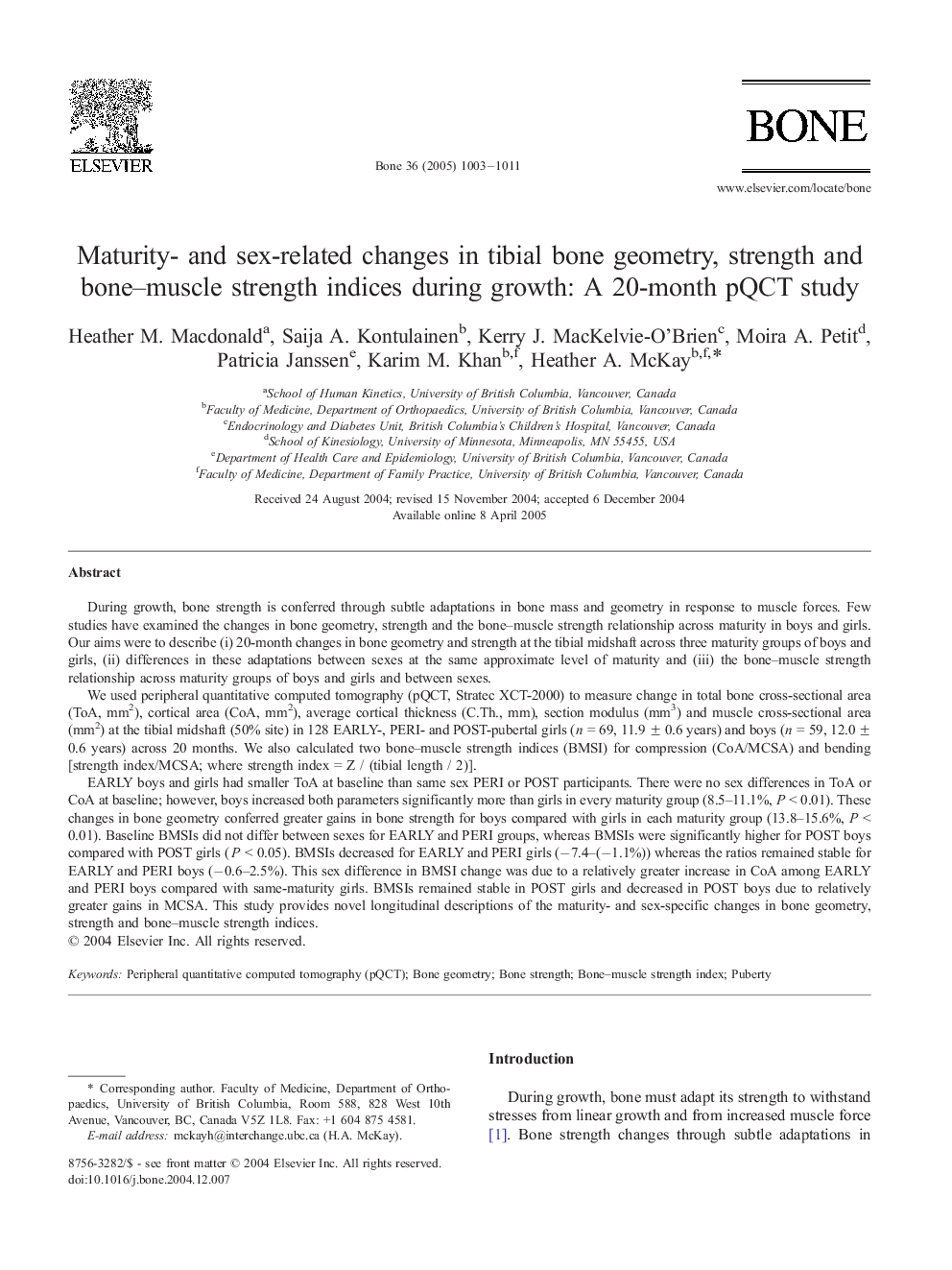| Article ID | Journal | Published Year | Pages | File Type |
|---|---|---|---|---|
| 9104916 | Bone | 2005 | 9 Pages |
Abstract
EARLY boys and girls had smaller ToA at baseline than same sex PERI or POST participants. There were no sex differences in ToA or CoA at baseline; however, boys increased both parameters significantly more than girls in every maturity group (8.5-11.1%, P < 0.01). These changes in bone geometry conferred greater gains in bone strength for boys compared with girls in each maturity group (13.8-15.6%, P < 0.01). Baseline BMSIs did not differ between sexes for EARLY and PERI groups, whereas BMSIs were significantly higher for POST boys compared with POST girls (P < 0.05). BMSIs decreased for EARLY and PERI girls (â7.4-(â1.1%)) whereas the ratios remained stable for EARLY and PERI boys (â0.6-2.5%). This sex difference in BMSI change was due to a relatively greater increase in CoA among EARLY and PERI boys compared with same-maturity girls. BMSIs remained stable in POST girls and decreased in POST boys due to relatively greater gains in MCSA. This study provides novel longitudinal descriptions of the maturity- and sex-specific changes in bone geometry, strength and bone-muscle strength indices.
Related Topics
Life Sciences
Biochemistry, Genetics and Molecular Biology
Developmental Biology
Authors
Heather M. Macdonald, Saija A. Kontulainen, Kerry J. MacKelvie-O'Brien, Moira A. Petit, Patricia Janssen, Karim M. Khan, Heather A. McKay,
